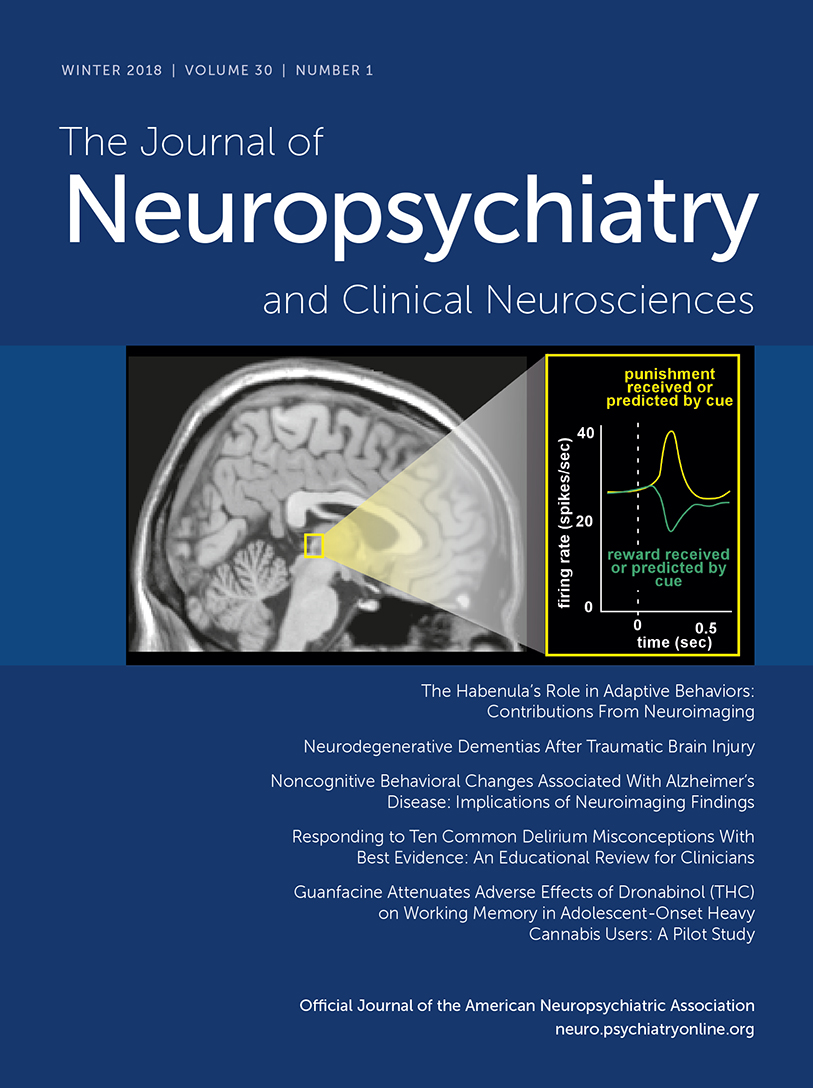Noncognitive Behavioral Changes Associated With Alzheimer’s Disease: Implications of Neuroimaging Findings
Abstract
Alzheimer’s disease (AD) is commonly associated with noncognitive behavioral changes (NCBCs). The authors systematically reviewed whether neuroimaging has helped with understanding the pathophysiology, diagnosis, or management of NCBCs associated with AD, including depression, aggression or agitation, anxiety, apathy, psychosis, and sleep disorder. The authors identified dissociable neural substrates with multimodal imaging: depression implicates the lateral and superior prefrontal cortex; apathy and agitation implicate the dorsal anterior cingulate; psychosis implicates right lateralized frontal and medial temporal areas; and anxiety implicates mesial temporal regions. Frontal white matter changes appear to underlie many NCBCs, emphasizing the preventative management of vascular risk factors. Further delineation of underlying neurocircuitry and pathophysiology in larger data sets might lead to biomarker identification for diagnosis and optimizing treatment targets.



